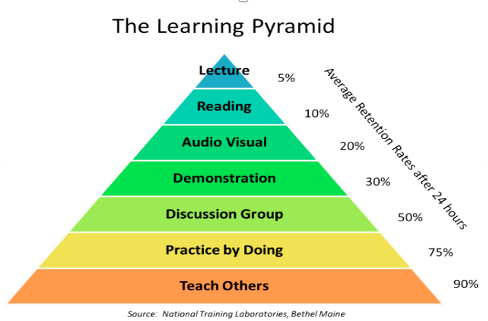 All stories are emotional. Won’t you agree? The very reason people respond to them is that it “touches the heart” so to speak or “strikes a chord”. To me, this is the most basic reason why using stories remains a powerful tool when we teach, train, or mentor. In fact, these are the critical keys to why stories work.
All stories are emotional. Won’t you agree? The very reason people respond to them is that it “touches the heart” so to speak or “strikes a chord”. To me, this is the most basic reason why using stories remains a powerful tool when we teach, train, or mentor. In fact, these are the critical keys to why stories work.
- it grabs the learners’ attention
- it keeps them focused and drawn into the story
- it helps them relate to your lessons because they recall their own experiences
- it then helps them understand the context in relation to their own real-life world
As learning professionals involved in the design and delivery of training, leveraging the story-based learning approach becomes a most effective form of communication. In fact, let me share with you some strategies that can be helpful in your implementation of story-based learning.
- Use Real-Life Stories
Truth in your stories makes them relatable, Imaginary ones will most likely not ring a bell in your learners’ minds. Simply put – real stories of everyday life help your learners connect with your content and the lesson you endeavor them to accept, understand and assimilate.
Workplace incidents are potent sources of stories that ring true for your workers/learners. Let’s say you are trying to impart lessons and policies that need to be remembered on data protection, and privacy. You ramble on with safety procedures and policies. All these will “fly over” your learners’ heads – losing them early on in your session. But real-life incidents jolt them and help them relate to it.
- Visually Present Your Stories
Would you rather just “tell” them your story, or would it not be more fun “illustrating” them? With graphics, images, and even videos, you lighten up otherwise boring, tedious content. Comic relief may likewise be used as humor, especially in certain complex content to drive home a point.
Charts or tree diagrams aid learners to understand as well as recollect a concept. Sales, marketing, or soft skills training programs may benefit from illustrations and even be enhanced with audio for a stronger impact.
- Game-Based Stories Power-Up Learner Engagement
This may be challenging to design and implement. However, if this can be done, it levels up learner interaction, especially in the improvement of problem-solving skills, risk-taking and assessment, and other skill-based objectives. Sometimes, this proves effective in critical-thinking learning situations and instances when learners learn best by doing.
- Animated Stories Anyone?
Complex topics may make use of this approach. The usage of audio, text, images, and the movement involved in producing animation helps clarify what can otherwise be a complicated concept. In fact, there are instances when it works well in the implementation of microlearning – the delivery of bite-sized learning units – since animations tend to be focused on targeted information or reinforcement. Its high interactive value makes it a popular choice, if possible, to design and deliver.
- Compelling Open-Ended Stories = Collaborative Learning
There have been instances when open-ended stories were used to elicit more interactivity among learners. It has all the elements of the story-based approach minus a definite ending.
This allows learners to experience a collaborative learning atmosphere based on their responses during the assessment process. However, keep in mind that the story by itself should be compelling enough to draw in the learners to highly participate in the analysis. This process will not only keep learners focused and more involved but provide you with insight into their comprehension of the learning content.
Whatever strategy you choose to leverage it is important to recognize these benefits that story-based learning brings forth: 1) connectivity with your learners; 2) a deeper understanding of your content; and 3) a positive impact on training retention.
Now, a word of caution. We would not recommend long-winding narratives nor non-relatable accounts. Stories that impact learners must be short, provocative, compelling, and relatable for them to interact at a deeper level.
Bio:
Dr. Bill Pomfret of Safety Projects International Inc who has a training platform, said, “It’s important to clarify that deskless workers aren’t after any old training. Summoning teams to a white-walled room to digest endless slides no longer cuts it. Mobile learning is quickly becoming the most accessible way to get training out to those in the field or working remotely. For training to be a successful retention and recruitment tool, it needs to be an experience learner will enjoy and be in sync with today’s digital habits.”
